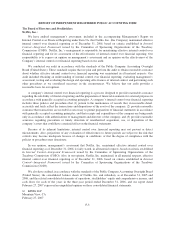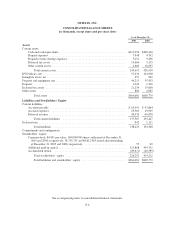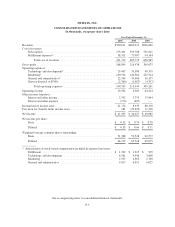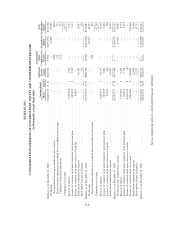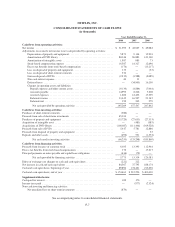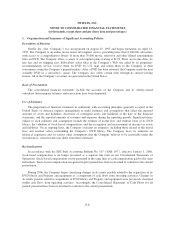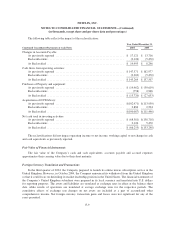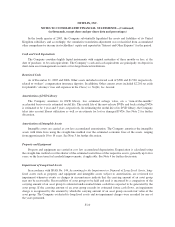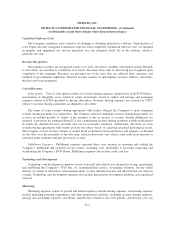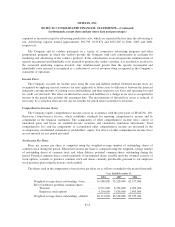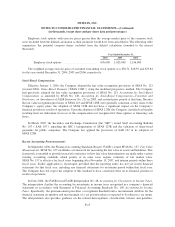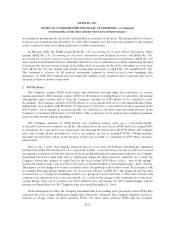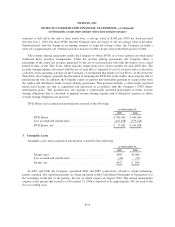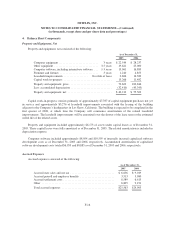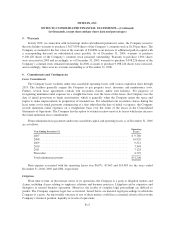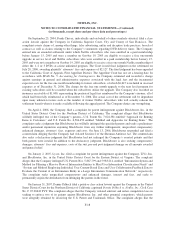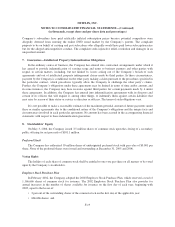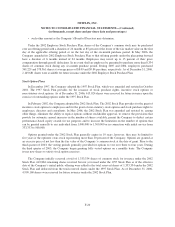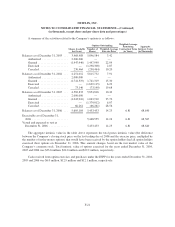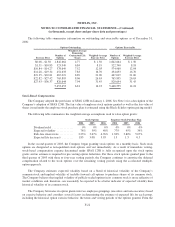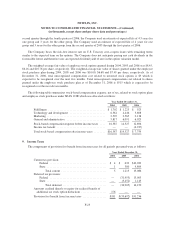NetFlix 2006 Annual Report Download - page 66
Download and view the complete annual report
Please find page 66 of the 2006 NetFlix annual report below. You can navigate through the pages in the report by either clicking on the pages listed below, or by using the keyword search tool below to find specific information within the annual report.
NETFLIX, INC.
NOTES TO CONSOLIDATED FINANCIAL STATEMENTS—(Continued)
(in thousands, except share and per share data and percentages)
Employee stock options with exercise prices greater than the average market price of the common stock
were excluded from the diluted calculation as their inclusion would have been anti-dilutive. The following table
summarizes the potential common shares excluded from the diluted calculation (rounded to the nearest
thousand):
Year Ended December 31,
2004 2005 2006
Employee stock options ........................ 676,000 1,023,000 1,196,000
The weighted average exercise price of excluded outstanding stock options was $30.71, $28.39 and $29.84
for the years ended December 31, 2004, 2005 and 2006, respectively.
Stock-Based Compensation
Effective January 1, 2006, the Company adopted the fair value recognition provisions of SFAS No. 123
(revised 2004), Share-Based Payment (“SFAS 123R”), using the modified prospective method. The Company
had previously adopted the fair value recognition provisions of SFAS No. 123, Accounting for Stock-Based
Compensation, as amended by SFAS No. 148, Accounting for Stock-Based Compensation—Transition and
Disclosure, an Amendment of FASB Statement No. 123 in 2003, and restated prior periods at that time. Because
the fair value recognition provisions of SFAS 123 and SFAS 123R were generally consistent as they relate to the
Company’s equity plans, the adoption of SFAS 123R did not have a significant impact on the Company’s
financial position or results of operations. Upon the adoption of SFAS 123R, the Company classified tax benefits
resulting from tax deductions in excess of the compensation cost recognized for those options as financing cash
flows.
In March 2005, the Securities and Exchange Commission (the “SEC”) issued Staff Accounting Bulletin
No. 107 (“SAB 107”) regarding the SEC’s interpretation of SFAS 123R and the valuation of share-based
payments for public companies. The Company has applied the provisions of SAB 107 in its adoption of
SFAS 123R.
Recent Accounting Pronouncements
In September 2006, the Financial Accounting Standards Board (“FASB”) issued SFAS No. 157, Fair Value
Measurements. SFAS No. 157 establishes a framework for measuring the fair value of assets and liabilities. This
framework is intended to provide increased consistency in how fair value determinations are made under various
existing accounting standards which permit, or in some cases require, estimates of fair market value.
SFAS No. 157 is effective for fiscal years beginning after November 15, 2007, and interim periods within those
fiscal years. Earlier application is encouraged, provided that the reporting entity has not yet issued financial
statements for that fiscal year, including any financial statements for an interim period within that fiscal year.
The Company does not expect the adoption of this standard to have a material effect on its financial position or
results of operations.
In June 2006, the FASB issued FASB Interpretation No. 48, Accounting for Uncertainty in Income Taxes.
The interpretation clarifies the accounting for uncertainty in income taxes recognized in a company’s financial
statements in accordance with Statement of Financial Accounting Standards No. 109, Accounting for Income
Taxes. Specifically, the pronouncement prescribes a recognition threshold and a measurement attribute for the
financial statement recognition and measurement of a tax position taken or expected to be taken in a tax return.
The interpretation also provides guidance on the related derecognition, classification, interest and penalties,
F-13


